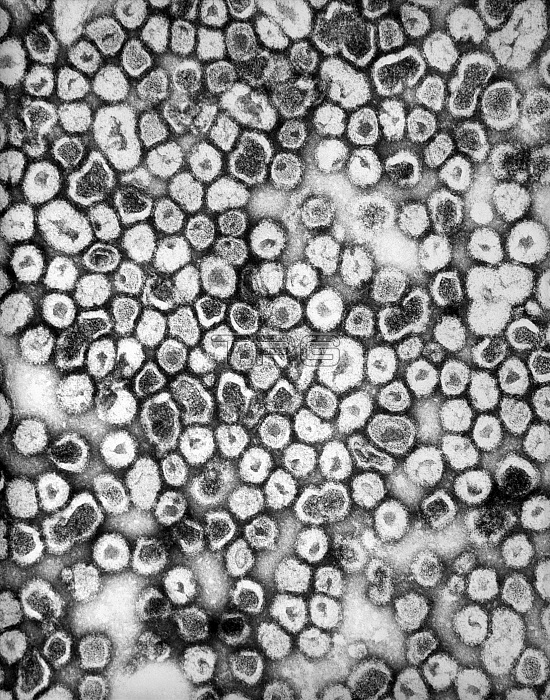
Negatively-stained transmission electron micrograph (TEM) revealed the presence of La Crosse (LAC) encephalitis virus ribonucleoprotein particles (RNP). LAC virus is a member of the Bunyaviridae virus family, California serogroup. This is an arbovirus, which means that transmission occurs through the bite of an infected arthropod, which in this case, is the treehole mosquito, Aedes triseriatus. LAC can also be transmitted through the bite of infected vertebrates including chipmunks and squirrels. There are approximately 70 cases of La Crosse encephalitis per year, with a case:fatality ratio of <1%. La Crosse encephalitis is usually a mild illness, with fever, headache, nausea, vomiting, and tiredness. People with severe disease, usually children, can have seizures, coma, paralysis, and lasting brain damage.
| px | px | dpi | = | cm | x | cm | = | MB |
Details
Creative#:
TOP22237520
Source:
達志影像
Authorization Type:
RM
Release Information:
須由TPG 完整授權
Model Release:
N/A
Property Release:
No
Right to Privacy:
No
Same folder images:

 Loading
Loading